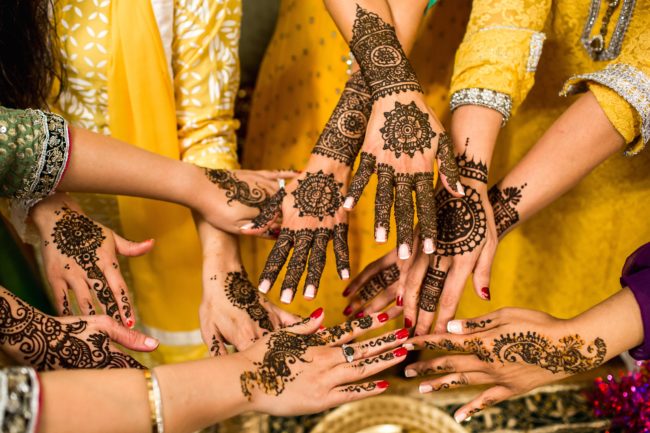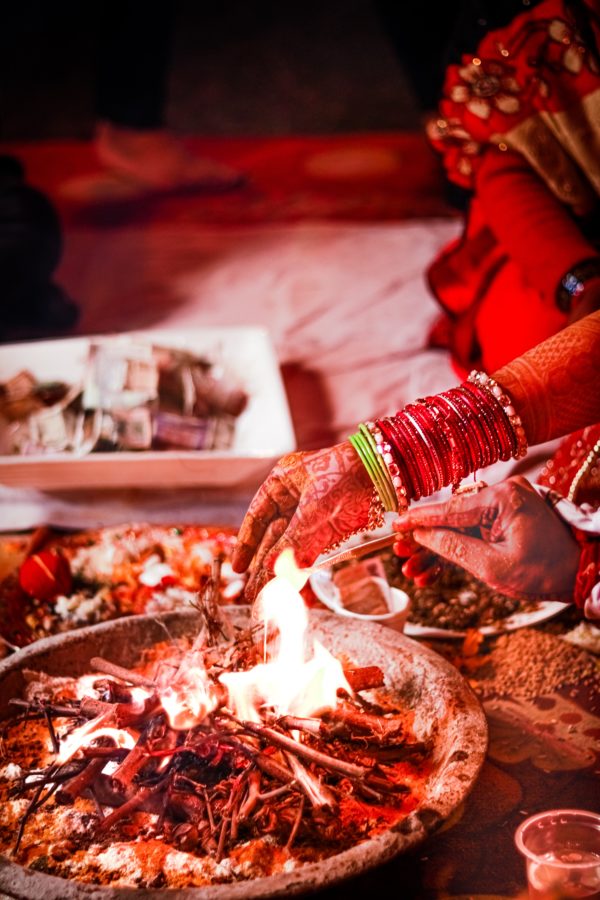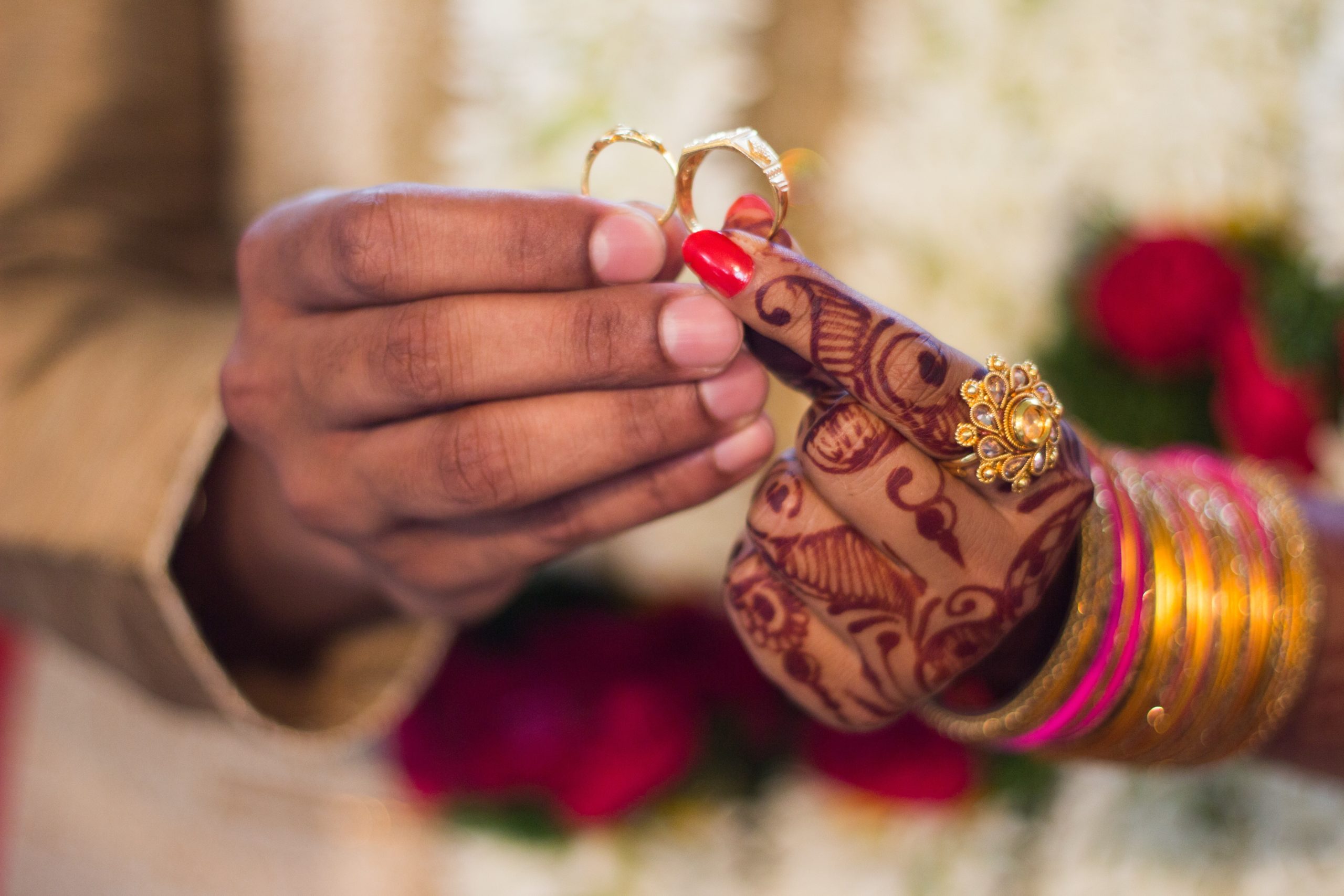A lot of planning goes into a couple’s wedding day, from the menu and entertainment to the flowers and décor. However, in Hindu culture, some couples invest as much time and energy into the engagement and pre-wedding rituals as they do into the actual wedding. A wedding is like a festival in which these get-togethers and rituals normally begin small and private, with participation from family and close friends. Larger gatherings that include family, relatives, and acquaintances take place in the days leading up to the wedding.
The most important ceremonies that happen just before the wedding are explained below:
- Engagement Ceremony or Mangni
The mangni, as it is known in India, is the celebration that most closely resembles a Western engagement celebration. All of the relatives of the couple typically attend this celebration, which is huge and joyful. Several ceremonies are carried out, a formal promise is made by the couple tying the knot, and vows are given to confirm the engagement at this party. Exchange of rings also happens during the mangni.

Image Resource: pexels.com
- Wedding Invitation Card or Lagna Patrika
The soon-to-be-weds also take part in lagna Patrika, in which the groom and bride exchange promises in writing with the intention of getting married at a future time. Typically, the invitations will state the time and day that are suggested during this event. A priest will usually be present to record the marriage’s specifics, such as the names of the couple who are engaged, the names of their families, and the planned date and place of the wedding. Post this the wedding invitation cards are finalized. One can choose from a wide variety of Hindu Wedding Card Designs that align with their wedding theme and traditions.
- Wagdaan
The wagdaan ritual can be carried out during the mangni to formally engage the pair. The bride’s family is welcomed into the groom’s family’s home during the wagdaan ceremony. Every family performs the ritual in a different way, but it typically entails an exchange of promises and a commitment, along with a ring to denote the engagement.
- Puja
Pujas, which are prayer rituals done in honor of deities, are a part of the majority of auspicious Hindu celebrations. There is typically an exchange of presents and various items, such as clothing and accessories, between the two families while they are both present. Numerous pujas are performed, each with a distinct significance and intent. They often meant to bless the forthcoming ceremonies and marriage.

Image Resource: unsplash.com
- Graha Shanti
The pair will take part in the Graha Shanti ceremony a few days prior to their wedding, which is said to bring them serenity, success, and happiness. The cleansing rite of Haldi, which consists of the couples’ family members applying the couple with scented oils and turmeric paste comes first in this ceremony. The next rituals are Sankalpa, which involves asking for blessings, and Muhurtamedha, in which the approaching wedding day is officially announced.
- Mehndi Ceremony
Traditionally, only the prospective bride and her nearest family members and friends are invited to the mehndi ceremony. The major objective of this celebration is to apply henna on her feet and hands with a bridal mehndi or henna pattern. Brown paste known as henna is used to create elaborate designs while temporarily coloring the skin. Since applying the henna might take some time and necessitate that the bride sits still for hours while it dries, the ritual is typically held a day before the marriage.
- The Ceremony of Sangeet
After the mehndi ritual, the sangeet or Garba is generally held. A pre-wedding party where the family gathers to perform, dance, and celebrate the upcoming wedding festivities is called a sangeet. Depending on the number of guests, it frequently happens at the bride’s house or another location. It is customary for family members to put on a musical performance to welcome the groom’s family to the bride’s family.
- Tilak Ceremony
Think of the tilak ceremony as the mehndi ceremony’s opposite for the groom. This ceremony is solely for the future groom and his family or close friends, as you would have imagined. The fathers of the bride and the groom give presents throughout the ceremony, including mehndi, grains, coconuts, garments, and jewelry. To ensure that the upcoming groom would be a devoted husband and father, tilak, a paste, is provided to be applied on his forehead. This ceremony’s gift-exchanging and tilak-application rituals are designed to represent the bride’s father welcoming the groom into the family.

